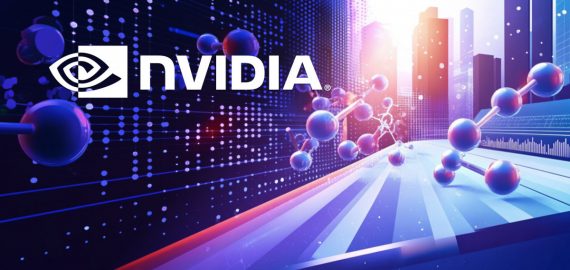The Rise of Sora: How AI is Redefining the Landscape of Video Content Creation


In Brief
Sora is a progressive text-to-video AI model that promises to change the game of video creation completely.
Adobe has recently revealed plans to integrate generative AI tools into its Premiere Pro software. This move, which includes granting users access to tools like OpenAI‘s Sora directly within Premiere Pro, is aimed at enriching the software with AI-powered capabilities such as scene manipulation and distraction removal.
Although OpenAI’s Sora is not currently accessible to the public, Adobe demonstrated its integration into Premiere Pro as an experimental feature without providing a specific timeline for its release.
Sora is a progressive text-to-video AI model that got attention due to its promise to change the game of video creation completely. A promising tool of extreme effect for everybody who has something to do with video production, motion design, and animation, this technology also carries crucial challenges.
Let’s explore all facets of the incredible and much-anticipated Sora.
Text to Video?
Essentially Sora is designed to make lifelike and visually captivating videos generated from text prompts. As an innovative application of AI, Sora aims to streamline the video production process and offer new possibilities for narrative processes and visual communication.
Sora’s functionality is rooted in its capability to interpret and execute textual commands to create compelling video content. Leveraging advanced deep learning techniques and language understanding, Sora processes input text and constructs corresponding visual scenes with characters, settings, and motion. This process involves a sophisticated interplay between natural language processing and video synthesis, producing output that closely aligns with the provided textual prompts.
In developing Sora, OpenAI’s team emphasized the importance of creating an AI model that encapsulates a deep understanding of language and a robust grasp of visual storytelling principles. By integrating state-of-the-art advancements in natural language understanding and video synthesis, Sora’s design prioritizes the cohesive fusion of linguistic expression and visual representation.
How Is It Even Possible?
So, Sora functions as a diffusion model similar to other generative AIs that work with text-to-image. It means that Sora starts each frame with static noise, then transforms images into depictions that will resemble the given prompt and description of what’s expected. This is possible thanks to machine learning. Sora videos can span up to 60 seconds.
Addressing temporal consistency, Sora innovates by considering multiple video frames simultaneously, ensuring coherence as objects move within the scene.
Incorporating both diffusion and transformer models, Sora follows a hybrid approach akin to GPT’s transformer architecture. Jack Qiao highlights the complementary strengths of these models, with diffusion excelling at texture generation but lacking in global composition, whereas transformers excel at high-level layout determination. The combination leverages the transformer’s ability to organize patches while the diffusion model fills in details.
In Sora’s implementation, images are subdivided into three-dimensional patches to accommodate temporal persistence. This mirrors the tokenization process in language models, where patches represent elements of a set of images. Additionally, a dimensionality reduction step is applied to streamline computational efficiency.
To enhance video fidelity, Sora employs a recaptioning technique similar to DALL·E 3, wherein GPT rewrites user prompts with additional detail before video generation. This serves as a form of automatic prompt refinement, ensuring faithful adherence to the user’s input.
How Good Is Sora Now?
OpenAI acknowledges several limitations in the current iteration of Sora. Notably, Sora lacks an inherent grasp of physics, meaning it may not consistently adhere to real-world physical principles.
As an example, the model fails to grasp cause-and-effect relationships, resulting in potential inconsistencies. Likewise, the spatial positioning of objects may display unnatural shifts.
When it comes to reliability, the status of Sora remains uncertain. Although OpenAI has presented examples that demonstrate high quality, it’s unclear to what extent selective showcasing has occurred. In text-to-image applications, generating multiple images and choosing the best one is common practice. The exact number of images produced by the OpenAI team to showcase the videos in their announcement article is undisclosed. This lack of transparency could potentially impede adoption, especially if generating hundreds or thousands of videos is required to obtain just one usable result. To alleviate this uncertainty, we must wait for broader accessibility of the tool.
Where Will Sora Be Of Use?
Sora’s capabilities extend to video creation from scratch, elongation of existing footage, and seamless filling of missing frames within videos.
Similar to how text-to-image generative AI tools revolutionized image creation without technical editing skills, Sora aims to simplify video production without needing image editing expertise. Here are some primary application scenarios:
- Sora enables the creation of short-form videos tailored for social media platforms such as TikTok, Instagram Reels, and YouTube Shorts. It particularly excels in crafting content that may be difficult or impractical to film using traditional methods.
- Traditionally, expensive endeavors like producing advertisements, promotional videos, and product demonstrations can be significantly simplified with text-to-video AI tools like Sora, which offer cost-effective solutions.
- Even if AI-generated videos are not integrated into final products, they serve as valuable tools for quickly illustrating concepts. Filmmakers can utilize AI for scene mockups prior to shooting, while designers can visualize products before manufacturing. For example, a toy company could employ Sora to create an AI mockup of a new pirate ship toy to evaluate its feasibility before mass production.
- Synthetic data proves invaluable in situations where privacy or feasibility concerns prevent the use of real data. While typically applied to numerical data such as financial records and personally identifiable information, synthetic data with similar properties can be generated for broader accessibility. In the realm of video, synthetic data is useful for training computer vision systems.
Challenges associated with Sora
- As a newly introduced product, Sora’s risks are not yet fully elucidated; however, they are anticipated to be similar to those encountered with text-to-image models.
- Without sufficient safeguards, Sora has the potential to create objectionable or inappropriate content, such as videos containing violence, graphic imagery, sexually explicit material, derogatory representations of particular groups, and the promotion or glorification of illegal activities. What constitutes inappropriate content can differ greatly depending on the user (like a child versus an adult) and the circumstances under which the videos are generated (such as an educational video on fireworks dangers inadvertently showing graphic scenes).
- The example videos shared by OpenAI demonstrate that one of Sora’s notable abilities is its skill in creating imaginative scenarios that go beyond reality. Nonetheless, this capability also makes it vulnerable to generating “deep fake” videos, where genuine individuals or situations are altered to convey falsehoods, whether unintentionally (misinformation) or intentionally (disinformation). Such content can lead to substantial consequences.
- The results produced by generative AI models are inherently linked to the data they were trained on. Therefore, cultural biases or stereotypes embedded in the training data may appear in the generated videos, possibly perpetuating similar problems.
What Does the OpenAI Team Do to Prevent the Risks Mentioned Above?
Currently, Sora is exclusively accessible to “red team” researchers—experts tasked with identifying and mitigating potential issues with the model. These researchers endeavor to generate content that may exhibit the risks outlined, allowing OpenAI to address and rectify any concerns before Sora’s public release.
Can Sora Leave Me Job-Less?
The capacity of Sora to produce top-tier video content based on textual cues has the potential to instigate notable transformations within the creative employment landscape. Conventional positions within videography, special effects, and animation risk obsolescence in the face of such advancements. While some creatives may pivot by honing expertise in overseeing AI functions, ethical AI utilization, and guiding creative direction to harness AI capabilities, the feasibility of this transition for all remains uncertain.
On the other hand, by reducing the technical and financial obstacles associated with video production, Sora has the potential to empower a broader range of individuals to craft high-quality content. This democratization may foster an upsurge in varied and inventive content distribution. While it may necessitate established media entities and content creators to adjust and introduce innovative approaches, this evolution could herald positive outcomes.
Either way, after the mass release, Sora will undoubtedly cause changes in the video and related industries, as well as in personal content creation.
Long-Term Implications of OpenAI Sora
As Sora becomes entrenched in professional workflows, its enduring impact unfolds:
Unlocking High-Value Use Cases: Sora’s integration across industries promises transformative applications, including:
- Accelerated Content Production: Sora streamlines media creation across VR, AR, gaming, and traditional entertainment sectors, expediting production cycles and facilitating ideation.
- Personalized Experiences: Tailored content curated by Sora to match individual preferences emerges, reshaping entertainment and educational paradigms to suit diverse learning styles and tastes.
- Real-Time Adaptation: Dynamic video editing enabled by Sora allows for on-the-fly modifications to content, catering to audience preferences and feedback in real-time.
- Blurring Digital Boundaries: Sora’s synergy with VR and AR blurs the lines between physical and digital realms, presenting novel immersive experiences and interactive storytelling opportunities.
In essence, the advent of Sora heralds a transformative era in AI-driven content creation, reshaping industries, narratives, and user experiences in profound ways.
Disclaimer
In line with the Trust Project guidelines, please note that the information provided on this page is not intended to be and should not be interpreted as legal, tax, investment, financial, or any other form of advice. It is important to only invest what you can afford to lose and to seek independent financial advice if you have any doubts. For further information, we suggest referring to the terms and conditions as well as the help and support pages provided by the issuer or advertiser. MetaversePost is committed to accurate, unbiased reporting, but market conditions are subject to change without notice.
About The Author
Zhauhazyn is a copywriter and sociology major. Fascinated by the intricate dynamics of Science and Technology Studies, she delves deep into the realm of Web3 with a fervent passion for blockchain.
More articles

Zhauhazyn is a copywriter and sociology major. Fascinated by the intricate dynamics of Science and Technology Studies, she delves deep into the realm of Web3 with a fervent passion for blockchain.

















































